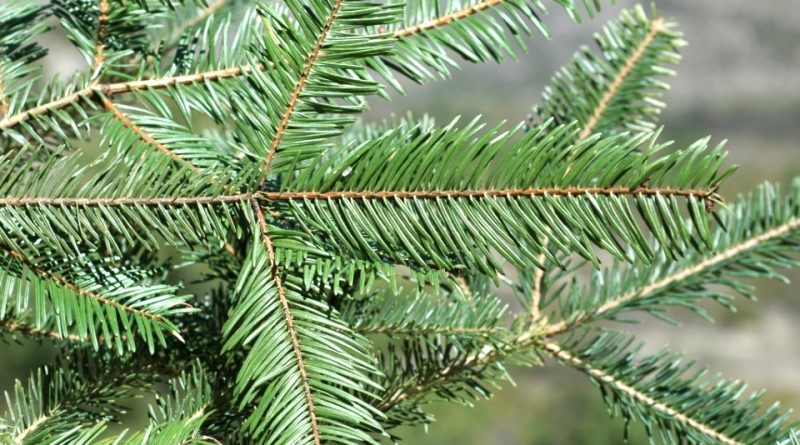Abies durangensis
Abies durangensis
The Durango fir (Abies durangensis Martinez, 1942) is an arboreal species belonging to the Pinaceae family.
Systematics –
From a systematic point of view it belongs to:
Eukaryota Domain,
Kingdom Plantae,
Pinophyta Division,
Pinopsida class,
Order Pinales,
Pinaceae family,
Genus Abies,
A. durangensis species.
Within this species the variety is recognized:
– Abies durangensis var. coahuilensis (I.M.Johnst.) Martínez – endemic to two disjoint areas in the Mexican federal state of Coahuila.
Etymology –
The term Abies comes from Abies which is the classical Latin name (Virgil, Egloghe, from the Sanskrit root abh gush of resin); according to another interpretation it would derive from the Greek word ἄβιος = long-lived.
The specific durangensis epithet refers to Durango, one of the federated states of Mexico.
Geographic Distribution and Habitat –
Abies durangensis is a fir native to Mexico and endemic to the Western Sierra Madre (Chihuahua, Coahuila, Durango, Jalisco and Sinaloa).
The nominal variety is found in Mexico: Durango, Chihuahua, Jalisco, Nayarit and Sinaloa at (1600-) 2000-2900m altitude, usually on well-drained talons or lithosols, where the climate is humid and cool. Can be found with Pseudotsuga menziesii subsp. glauca, Picea chihuahuana (only near El Salto, Durango), Pinus strobiformis, P. chihuahuana, P. durangensis, Cupressus lusitanica and Juniperus deppeana. It has a cold resistance between -12.1 ° C and -6.7 ° C).
The coahuilensis variety is found in Coahuila and Nuevo León, at 2270 m above sea level; is rare and is found on wet canyon floor sites in dense forest along with Pseudotsuga menziesii subsp. glauca, Pinus strobiformis and Cupressus lusitanica.
The habitat of this species is that of the west-facing slopes of high mountain altitudes between 1,600 and 3,000 m, generally on well-drained soils. It is often found in association with Pseudotsuga menziesii, Pinus strobiformis, Pinus leiophylla, Cupressus lusitanica, Cupressus arizonica, Picea chihuahuana, Pinus durangensis, Quercus castanea, Quercus rugosa and Prunus serotina.
Description –
Abies durangensis is a tree that grows up to about 40 m, with a trunk that can reach 1.5 m in diameter, with a conical habit.
The bark is gray-brown and smooth in young trees, which with age becomes dark brown and deeply fissured longitudinally.
The secondary branches are purplish red or red brown, hairless or slightly pubescent. The buds are ovoid, 4-5 mm long, with pink-yellow resin.
The leaves are needle-like, glossy, green, up to 3.5 cm long, with obtuse apex.
Female strobili are ocher when immature and light brown when ripe; they are cylindrical with obtuse apex, 5,5-10 cm long and up to 4,5 cm broad, with short peduncle; the scales are cuneata-flabellate, 2 cm long, 2.8 cm broad, pubescent in the exposed parts. Male strobili are 1-2 cm long, with red microsporophylls. The seeds, yellowish brown in color, are about 7-8 mm long, oblong-wedge-shaped, with 1 cm yellowish wings, cuneate.
Cultivation –
Abies durangensis is a plant that grows in an area on slopes facing west at altitudes between 1,600 and 3,000 m.
It grows on lithosols or in any case immature soils, well drained, with a humid and cool climate.
It is a plant that resists temperatures of about -12 ° C.
It is a slow-growing plant which, therefore, is not suitable for parks and gardens to be set up in a short time.
Reproduction is by seed.
Customs and Traditions –
Abies durangensis is a conifer of the Pinaceae that was described by the botanist Maximino Martínez in 1942 and is found only in Mexico in the area described above.
This plant does not have a very common use, even for ornamental purposes also because it is slow growing.
From an ecological point of view, with a very large area (about 150,000 km²), and a very common presence, A. durangensis is not classified as endangered species on the IUCN Red List.
Preparation Method –
Abies durangensis is a tree that is little used from an ornamental point of view while no other uses of a food or medicinal nature are known.
Guido Bissanti
Sources
– Acta Plantarum – Flora of the Italian Regions.
– Wikipedia, the free encyclopedia.
– Useful Tropical Plants Database.
– Conti F., Abbate G., Alessandrini A., Blasi C. (ed.), 2005. An annotated checklist of the Italian vascular flora, Palombi Editore.
– Pignatti S., 1982. Flora of Italy, Edagricole, Bologna.
– Treben M., 2000. Health from the Lord’s Pharmacy, Advice and experiences with medicinal herbs, Ennsthaler Editore.
Photo source:
– https://inaturalist-open-data.s3.amazonaws.com/photos/171430121/original.jpeg
– https://s.idigbio.org/idigbio-images-prod-fullsize/cd1ef5c7ad1e6c04ce21c06d14435be1.jpg
Warning: Pharmaceutical applications and alimurgical uses are indicated for informational purposes only, they do not represent in any way a medical prescription; therefore no responsibility is taken for their use for curative, aesthetic or food purposes.


